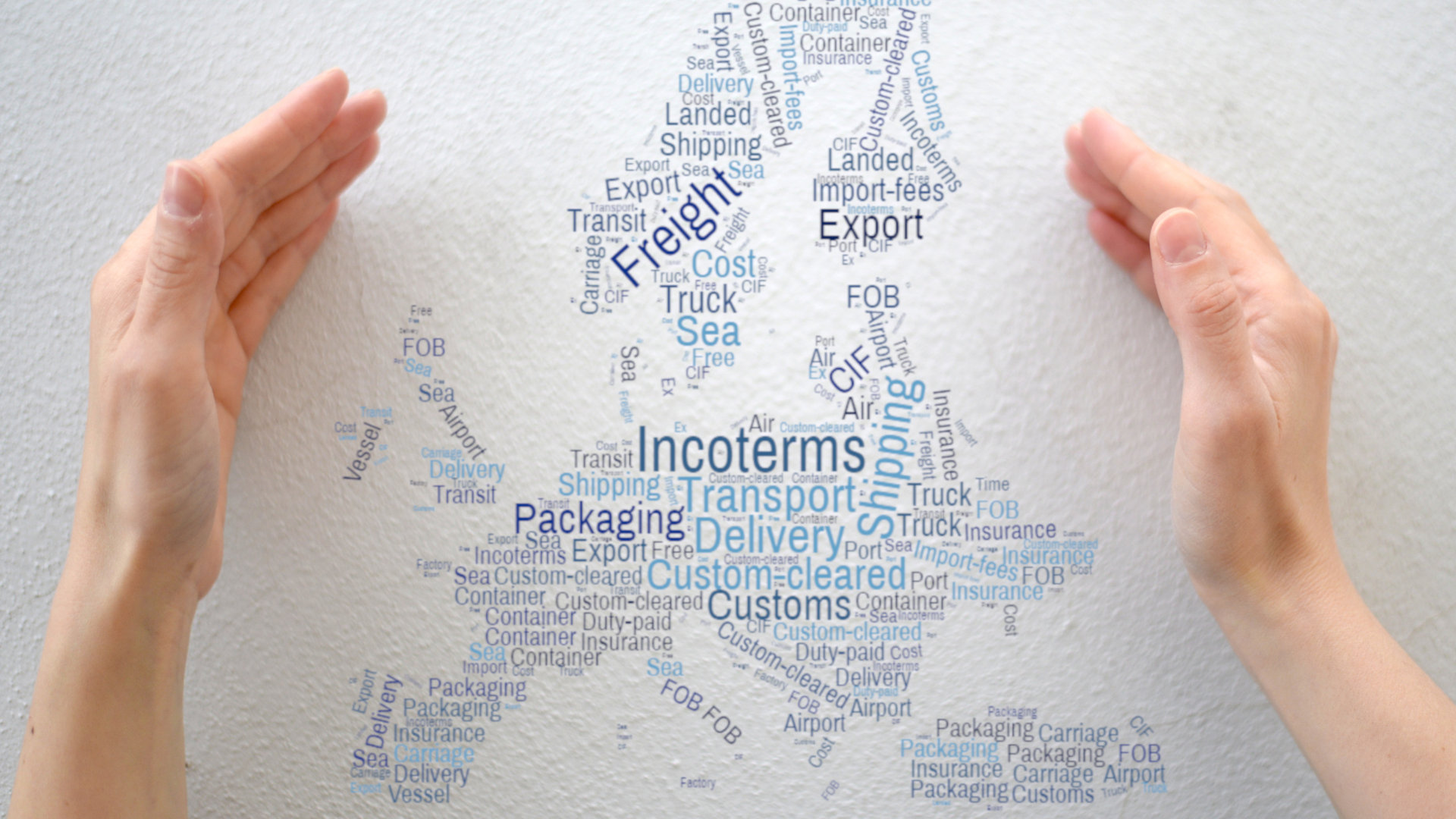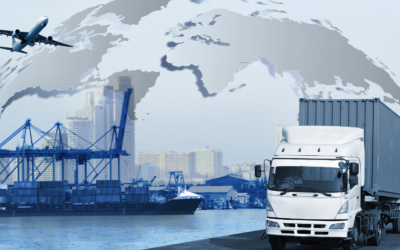Complete guide to the new Incoterms in 2023
At international tradenot all companies speak the same language. They can communicate unambiguously thanks to Incotermsa term derived from the contraction in English of the notion International Commercial Terms. This codified system defines the conditions for the delivery of goods at national and worldwide. It clarifies responsibilities of the parties involved (buyer, seller and carrier) and takes into account the various various contracts such asinsuranceinsurance General Sales Conditions (GCS), etc. The International Chamber of Commerce (ICC) regularly modifies these codes to adapt them to developments in international transport. What are the 11 Incoterms in 2023 ? What has changed since the 2020 update ? Find out below!
The 11 Incoterms defined by the International Chamber of Commerce
Each Incoterm is symbolized by 3 letters. There are 11 of them, divided into 2 groups: those concerning multimodal transport and those defining maritime delivery operations. Here is the list of Incoterms according to the new update (2020).
The 7 multimodal Incoterms
Multimodal transport is when several means of transit are involved in getting a product from point A to point B. This is the case, for example, when a product is shipped from Paris to London. This is the case, for example, of a product shipped from Paris to London. It arrives at the port by road, before crossing the English Channel by sea and finally reaching its destination by container truck. Here are the 7 multimodal Incoterms.
1. EXW (Ex-Woks) or "ex works
This is the most basic Incoterm for the seller. It stipulates that the buyer is responsible for picking up the goods from the warehouse where they are stored, for transporting them and for handling the formalities involved in delivery. All the shipper has to do is prepare the order.
2. FCA (Free Carrier) or "Free Carrier
The seller's responsibility is a little more involved here. He must organize transport of the goods to the delivery address. Managing the administrative formalities relating to this stage.
3. CPT (Carriage Paid To) or "carriage paid to
In this case, the seller pays the shipping costs. However, it is the buyer who assumes responsibility for shipping risks as soon as the goods are handed over to the carrier.
4. CIP (Carriage Insurance Paid to) or "carriage paid
This rule requires the seller to assume the costs AND risks associated with transport. In this case, he is obliged to take out an all-risks insurance policy.
----
Let's move on to the Incoterms with the letter D first. Known as "sale on arrival", they basically require the seller to assume all transport costs and risks.
5. DAP (Delivered At Place) or "delivered to destination
This Incoterm relieves the seller of unloading and customs formalities on arrival. Once the goods have arrived at the port or airport of destination, and even if they have not left the ship or plane, the buyer takes over.
6. DPU (Delivered at Place Unloaded) or "delivered to destination unloaded".
This is the only case where the supplier is responsible for unloading the parcels. The customer takes care of customs formalities.
7. DDP (Delivered Duty Paid) or "delivered duty paid
Here, the seller takes care of transport and formalities. All that's left to the buyer is unloading.
The 4 maritime Incoterms
The so-called maritime Incoterms are used when the seller deposits his goods near or on board a ship in a river or sea port. These 4 rules specifically concern the shipment of products in bulk and conventional transport by sea or river. In other words, they do not apply to containerized deliveries.
1. FAS (Free Alongside Ship) or "Free Alongside Ship
The seller is deemed to have delivered his order when it is deposited alongside the ship on a quay at the port of shipment. The buyer then bears the risks and costs of loading, transporting and unloading the goods.
2. FOB (Free On Board) or "free on board".
Under this rule, the seller must deliver and load the package on board the vessel designated by the customer. The risks and costs associated with the transport and unloading of goods pass to the buyer as soon as they are loaded on board.
3. CPT (Carriage Paid To) or "carriage paid to
In this case, the seller pays the shipping costs. However, it is the buyer who assumes responsibility for shipping risks as soon as the goods are handed over to the carrier.
4. CIF (Cost, Insurance and Freight) or "cost, insurance and freight
The seller bears the risks and pays the transport costs. Unlike the CIP Incoterm, the CIF does not require the seller to take out comprehensive insurance. Coverage must, however, be 10% higher than the commercial value of the goods transported.
Incoterms changes in 2023
The ICC updates the Incoterms every 10 years. The latest published version is valid since 1st January 2023 and is applicable until December 31, 2029. Without overturning the Incoterms system established in 2010, it clarifies and explains the rules of international trade. Its aim is to make it easier to use the current regulations, and to avoid misinterpretations and the disputes that can result from them. Here are the main new features.
A change of name - DAT becomes DPU
With the 2020 update, the DPU Incoterm (Delivered At Place Unloaded) replaces the DAT (Delivered At Terminal) rule. This change broadens the choice of destination, previously limited to a container yard, airport or other general warehousing facility. From now on, it can be any premises belonging to the customer or to one of his partners.
It should be noted that the EXW rule is not recommended for international transport operations. Contrary to expectations, this rule has not been withdrawn. It is, however, reserved for national trade.
A certificate of loading on board given to the seller
This new option, added to the FCA Incoterm, introduces a document proving that the goods have been loaded onto the vessel. By mutual agreement between the two parties involved, the consignee must instruct the carrier to issue a certificate of loading on board to the shipper. The latter recovers the bill of lading while remaining outside the contract of carriage.
A difference between CIP and CIF in terms of insurance
Incoterms 2010 imposed a minimum coverage. While the CIF still requires an insurance policy of 10% or more of the invoiced amount, the CIP obliges the seller to take out an all-risk guarantee contract.
A better explanation of international transport rules
The introduction to Incoterms 2020 is more detailed than the previous version. It explains the purpose of the system and clarifies its limitations. For example, the fact that these rules are not intended to replace other contracts has been reiterated. Additional explanatory notes make it easier for users to understand the rules.
A change in Incoterms D
If goods are subject to Incoterm D, they are taken over by the seller before the import border. Responsibility passes to the buyer as soon as this limit is crossed.
New international trade rules: what you need to know
Incoterms updates are designed to keep pace with changes in domestic and international trade. The latest update has not turned world trade upside down, nor really changed the rules in terms of logistics and product transport within a country or across national and continental borders. It has, on the one hand, widened opportunities for stakeholders and, on the other, improved their protection.
The main aim of this version was to clarify the regulations for freight transport professionals and users. In particular, it reiterates the basic principles of Incoterms and goes into greater detail on their usefulness.
Did you like this article? Discover also the door-to-door transport of precious objects.





0 comments